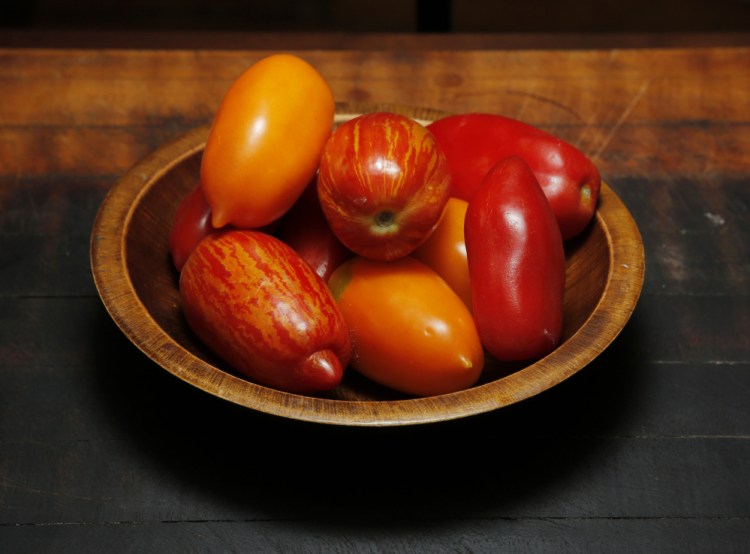Tomato plants are loving the exceptionally hot summer weather we’re having. And I am loving the extra tomato-y sweetness brought to my table courtesy of the drought conditions we’re having in Cumberland County.
But prolonged periods of days well into the 80s, coupled with growing concerns over water usage, make me less than keen to spend hours first blanching tomatoes to remove their skins and then canning them in a water bath on my stove in my steamy kitchen.
To that end, I am spending this week’s column on the benefits and beauty of freezing almost-whole, meaty plum tomatoes instead of stuffing them into jars.
The term “plum” encompasses several varieties of tomatoes, all of which grow in an elongated, oval shape, and are harvested in August and September, October if we’re lucky here in Maine. The Roma is the overarching title for the solid orangey-red variety, but among the many cultivars included in that category are Pozzano, Pomodoro and Pony Express.
Also making an appearance in the markets where I shop are orange-and-yellow striped (the Speckled or Striped Roman), orange with greenish-purple tops (Ukrainian Purple) and full-on yellow (Yellow Gold Roma or BHN 901) tomatoes.
Plum tomatoes have fine skins, thick flesh and reduced amounts of pulp, traits that allow them to hold their shape when preserved and cook down for sauces faster than other varieties. And they freeze really, really well.
I have two pet peeves about store-bought canned plum tomatoes: chunky cores that don’t break down in my sauce and rolled-up shards of unremoved skins that get stuck in my teeth.
I avoid my first peeve by pulling out my multi-purpose melon baller and scooping out the core from the stem end of as many rinsed plum tomatoes as I have on hand. I spread the cored fruit on cookie sheets and freeze them. Once they are frozen solid, I put the tomatoes in freezer bags or more environmentally-friendly airtight containers, admiring as I do so the sound of the fruit banging together, which reminds me of the solid clack of the cue ball sending an eight ball into a corner pocket for the win.
When I preserve plum tomatoes in the freezer, the annoying skin issue is seemingly magically taken care of on the thawing end of the process. To use the frozen tomatoes, I remove them from the freezer in the quantity I need (for every 2 cups of tomatoes called for in a recipe, you’ll need about 8 medium-sized plum ones) and run them very quickly under warm water so the skins – which crack because the tomatoes’ flesh expands when frozen – simply slip off.
Freezing tomatoes is one of those happy green-eating happenstances. I conserve water and fossil fuel-driven energy without ever having to break a sweat.
Christine Burns Rudalevige is a food writer, a recipe developer and tester, and a cooking teacher in Brunswick. Contact her at: cburn1227@gmail.com.
Send questions/comments to the editors.



